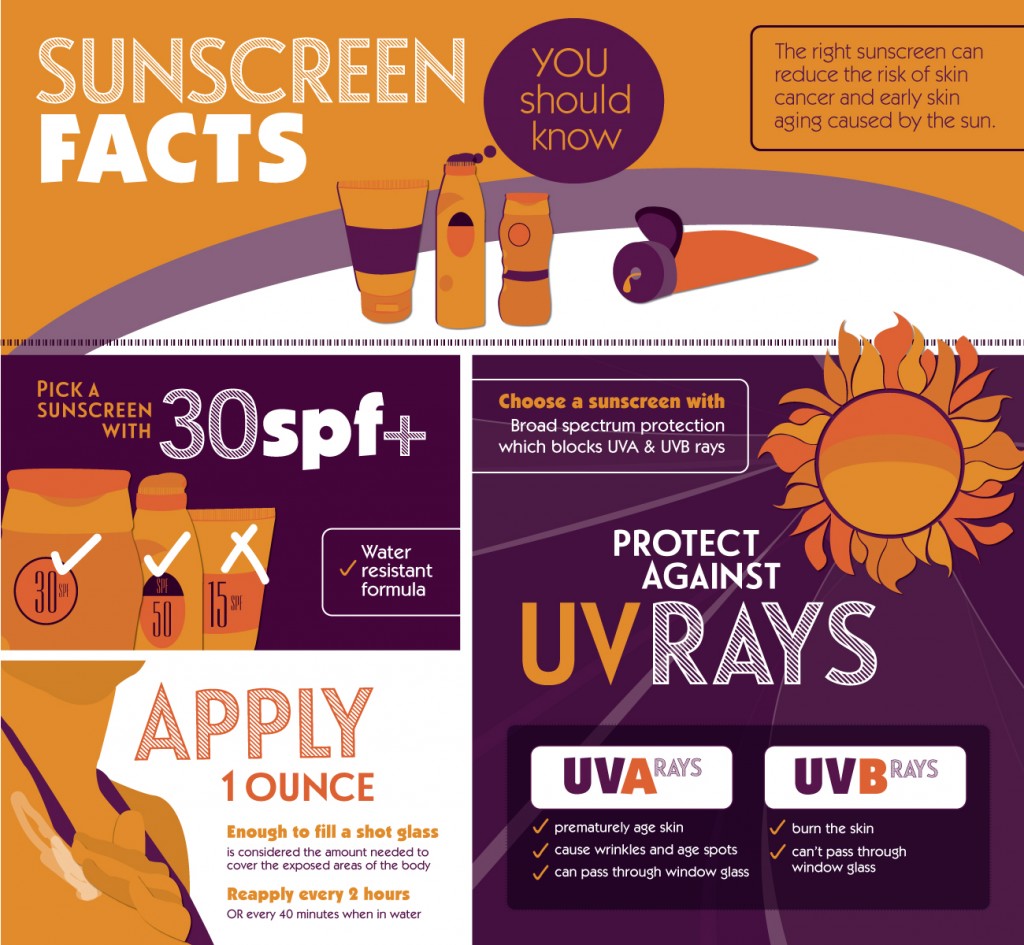With leadership roles at the Canadian Dermatology Association’s Sun Awareness and Skin Cancer Prevention Programs, and involvement in clinical studies on sun protection over the last couple of decades, Dermatologist Dr. Rivers has become known as a Canadian sun awareness expert. He is frequently contacted and interviewed by the media on a range of sun-related topics from melanoma and sun damage, to the rules around sun protection.
There are still many myths and misinformation surrounding the topic of sunscreen, so we asked Dr. Rivers to set the record straight, starting with the basics.
 What does SPF mean and what number should I choose?
What does SPF mean and what number should I choose?
“SPF” stands for “Sun Protection Factor” and measures the ability to prevent UVB rays from damaging the skin. It provides a guideline for how much longer you can stay in the sun beyond having unprotected skin, e.g. “SPF 30” theoretically prevents burning 30 times longer and prevents 97% of UVB rays from being absorbed by the skin, compared to 93% prevention for SPF 15.
Always start with a minimum of SPF 30 and go higher if you:
- Are spending an extended amount of time in the sun
- Have fair or sensitive skin
- Are in an unusual environment such as a higher altitude (mountains) or reflective surroundings (sun on water or snow)
Most people do not put on enough sunscreen, which is 30 ml or 1 oz. for the whole body, nor do they reapply it during the day – so the higher SPF helps account for these problems.
Why would I need an SPF 70 or 80?
SPF 50 is really the proven ‘limit’ to sun protection: it keeps out 98% of UVB rays, which is 1% more than SPF 30. No sunscreen can block all UV rays. The higher SPFs can be misleading as users will have a false sense of security, believing they can spend the whole day outdoors without reapplying their sunscreen.
What else should I look for in a sunscreen?
Your sunscreen must be labelled “broad spectrum” to effectively protect the skin – this means it blocks both ultraviolet A (UVA) and ultraviolet B (UVB) radiation. Some products will use the term “multi-spectrum” or UVA/UVB protection, which also offer the right protection for the skin.
“Water-resistance” is defined as 40 minutes of protection after water exposure. This is a good feature if water sports or perspiration is involved, as again, most people tend to forget to reapply their sunscreen after coming out of the water or playing outdoor sports.
Dr. Rivers and I recommend patients to keep trying different brands of sunscreens until you find a formulation that you really like, and stick with it. That way, you are more likely to use it every day.
If I have dark skin, do I need sun protection?
Increased melanin in the skin does have protective properties and for many that means their skin “never burns.” However, no matter what colour your skin is, you are still susceptible to premature aging and skin cancer. Yes, darker skin tones need sun protection too.
If I wear sunscreen, how will I get my vitamin D intake?
Many people are not aware that as little as 5 to ten minutes in the sun is all you need to deliver your daily intake (which I recommend to be at least 1,000 IU per day for individuals under the age of 70). Your vitamin D sufficiency will be found through foods naturally rich in vitamin D and oral supplementation. If you are spending time outside, you need to be wearing sunscreen.
How long does sunscreen last?
On your body, a good rule of thumb is to reapply after every two hours of sun exposure, or after swimming or active sports – where perspiration causes the sunscreen to come off.
In the bottle, I recommend to discard of any sunscreen that’s over 2 years old or has been subject to high temperature fluctuations as the ingredients have been diminished in their effectiveness.
If you are applying the correct amount to your entire body – which is 30 ml or two tablespoons – every two hours, you should go through almost half a 236 ml bottle during a day at the beach!
Some sunscreens have an expiry date on the packaging to help you remember when to discard it. If you buy a sunscreen without an expiration date, write the purchase date on the bottle.